From different colours to storage and splashbacks, these kitchen ideas will help you create your ideal space

There’s more choice than ever when it comes to kitchen design, which makes it difficult to know where to start.
Choosing colours and materials is the fun part, but it’s also important to consider functionality and your budget.
Read on for inspiration that combines aesthetics with practical considerations such as storage, lighting, flooring and more.
Small kitchen ideas
Small kitchens are particularly tricky to design as you need enough space for appliances, food storage and room to move around with ease.
Small kitchen ideas – in pictures
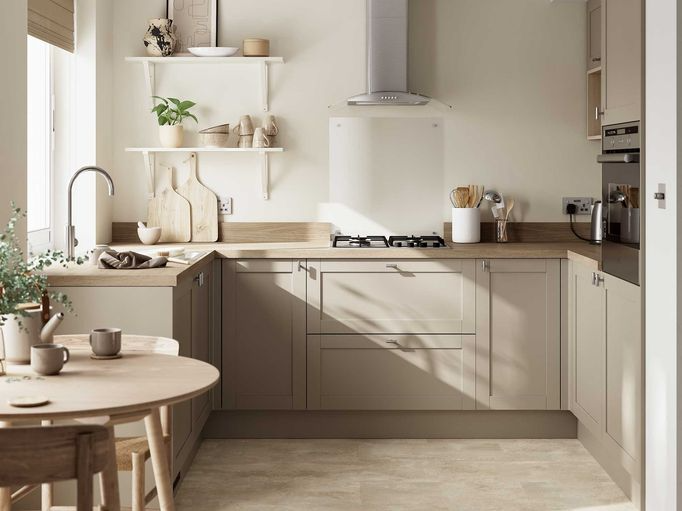
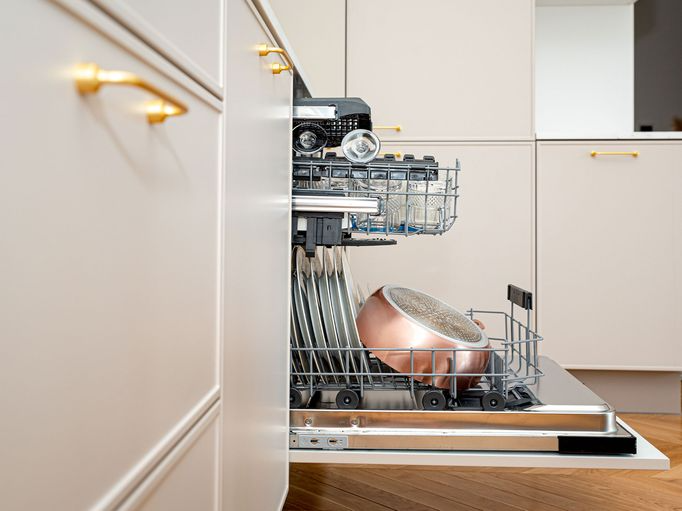
Small kitchen storage ideas
Storage is particularly important when you have limited worktop space as you’ll want to keep work surfaces as clutter-free as possible.
Consider:
Corner cupboards with carousels for easy access
Full-height cabinetry as this will maximise shelf space and also draw the eye upwards to make the space seem bigger. However, bear in mind that you’ll likely need to sacrifice worktop space
Open shelving instead of wall cabinets may open up the space, but it can look messy, and whatever you store there is likely to gather dust and grime. Cabinets with glass panels will create a similar effect without the dust.
Hanging storage such as wall-mounted utensil hooks or overhead racks for pots or pans
A breakfast bar or fold-away table – this is an efficient way to add dining space into a small kitchen and it can also provide extra work surfaces for preparing meals
Small kitchen colour ideas
Small kitchen design is all about creating the illusion of more space. Make the most of any natural light and keep your colour palette light, as this will make the space feel bright and airy.
But that doesn’t mean you can’t experiment with colourful accessories. Add pops of colour via a dramatic splashback or even via your kettle, toaster, microwave or fridge-freezer.
Glossy, reflective or mirrored surfaces will also help to bounce the light around the room. Consider high-gloss cupboards and a glass or reflective splashback.
Integrated appliances will also make your kitchen seem more sleek and spacious.
Be inspired to make home improvements. Sign up for our free monthly Home newsletter
Kitchen colour ideas
When considering your kitchen colours, some designers recommend the 70:20:10 rule – 70% should be the main colour, 20% the secondary colour and 10% the accent colour.
Kitchen colour ideas – in pictures
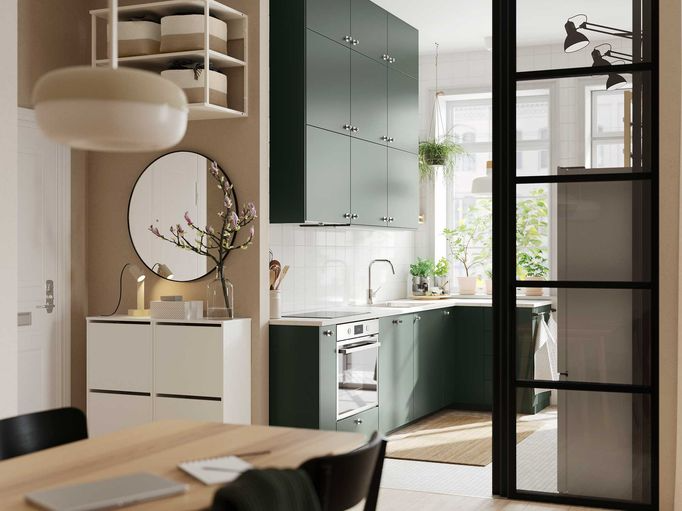
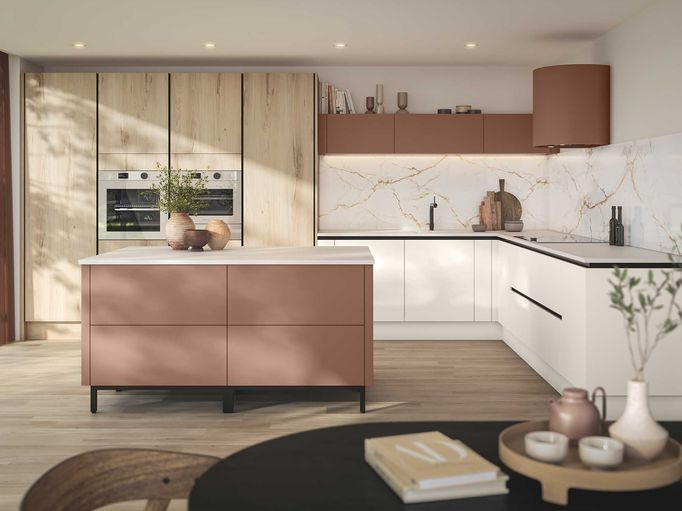
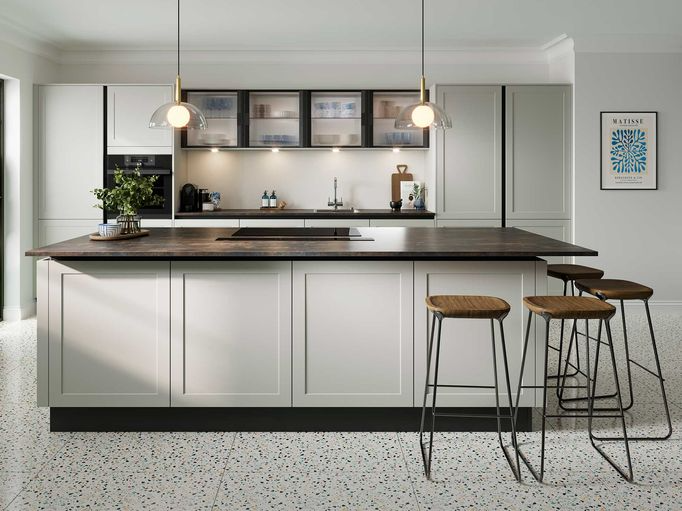
Light colours make spaces look larger because they bounce light around the room. Beige, cream or even pale pink work just as well as white. Using the same colour across the cupboards and walls will give you a seamless look.
Blue kitchens and green ones have proved very popular over the past few years. Navy blue cabinets look great with gold metallic handles and hardware, while forest green cabinetry works surprisingly well with pale pink tiles or splashbacks.
Darker colour schemes add drama and warmth, but remember that if you opt for dark blue or even black cabinetry, they’re likely to show scratches and marks, so made need regular maintenance to keep them looking new.
If you want dark cupboards without the upkeep, try stained wood.
Also consider texture as well as colour when adding colour. For example, introducing tiles on some walls and paint on others can create a more visually interesting scheme.
Kitchen paint ideas
Whether you have lots to spend on your kitchen or are on a shoestring budget, paint is a great way to transform the space and inject some personality.
However, you need to make sure you choose paint that is moisture resistant, durable and wipe-clean (especially if you have children). Kitchen-specific paints should do these jobs.
If you struggle with damp, you could opt for a mildew and mould-resistant paint. However, specialist paints like this often have limited colour options.
Another option is to use a semi-gloss or high-gloss paint. These will still repel moisture and you can wipe away any mould that appears.
Kitchen sink ideas
The sink is a key part of your kitchen, so you want to choose a material that will prove durable.
When you choose one, you need to consider the type, size and material.
Kitchen sink ideas – in pictures
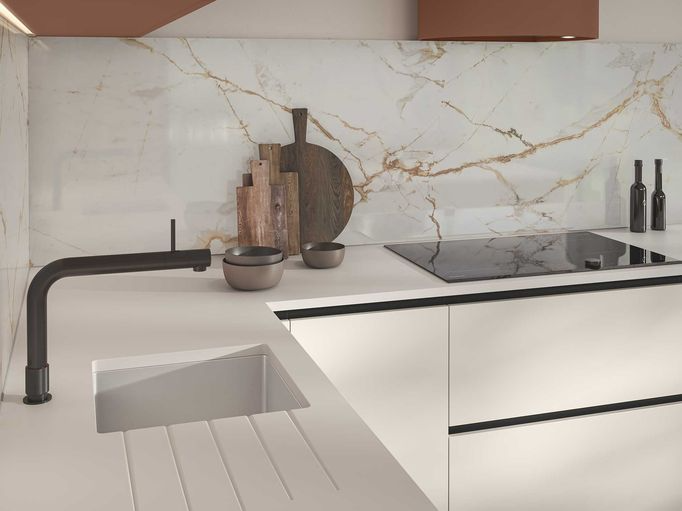
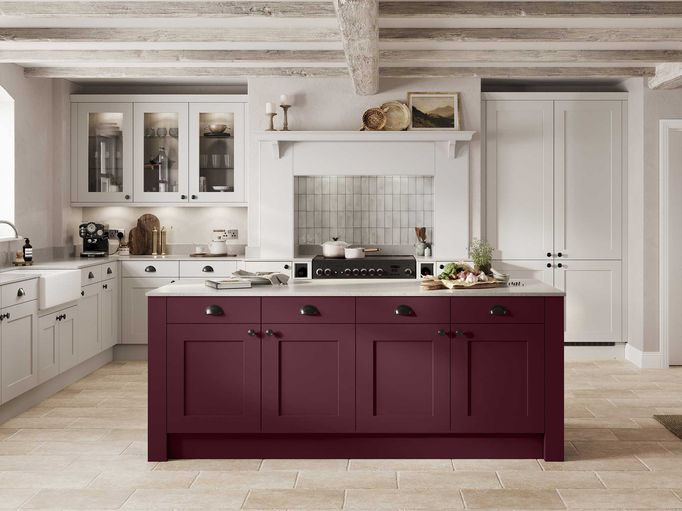
There are three main types of kitchen sink:
Inset This is the more traditional option, where the bowl of the kitchen sink drops down into your kitchen worktop.
Undermounted This is where it fits underneath the worktop. An undermount sink usually lacks a sink drainer, so they’re more in line with a minimalist look.
Farmhouse A deep basin with an exposed front, which offers a more rustic or traditional aesthetic.
The size of your sink will be partially dependent on whether you choose a single-bowl with one basin or a double-bowl sink with two.
When you consider your sink material, remember that they typically take a hammering, so it’s wise to go for a durable option.
Common kitchen sink materials include:
Stainless steel One of the most popular options, it will endure plenty of hardship in a busy kitchen and makes for an affordable option.
Granite composite This will add character to your kitchen and is durable, but can get pricey.
Ceramic This option is durable and looks traditional.
Composite These are similar to, but more affordable than, granite.
Kitchen splashback ideas
Kitchen splashbacks come in many shapes and sizes. Traditionally, it was a glass, stainless steel or tiled panel placed behind sinks or hobs to protect the wall from any splashes or grease.
Kitchen splashback ideas – in pictures
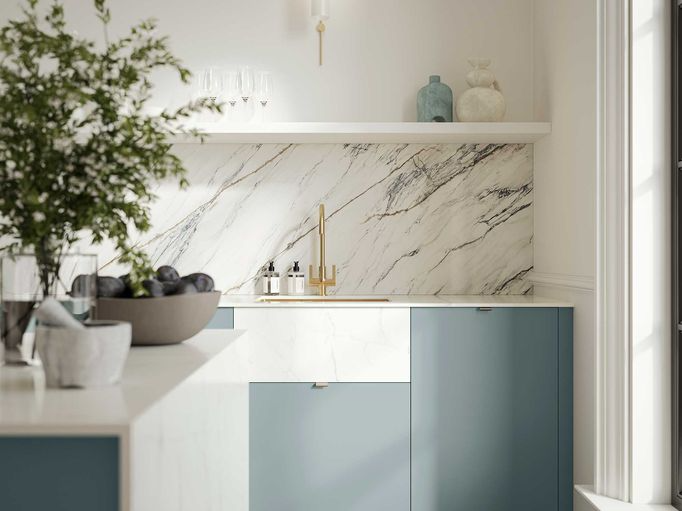
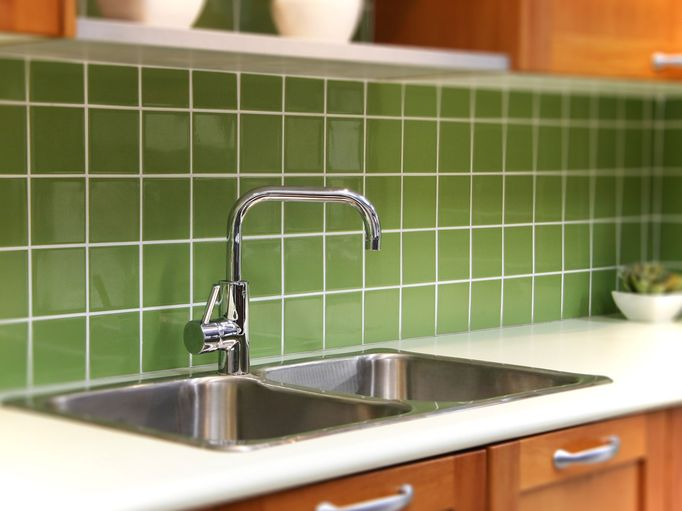

Kitchen island ideas
Islands have become a must-have in modern kitchens. There are many advantages to having one installed, including additional storage, seating and workspace.
They are also a good way to ‘zone’ an open-plan kitchen-diner-living space.
Kitchen island ideas – in pictures
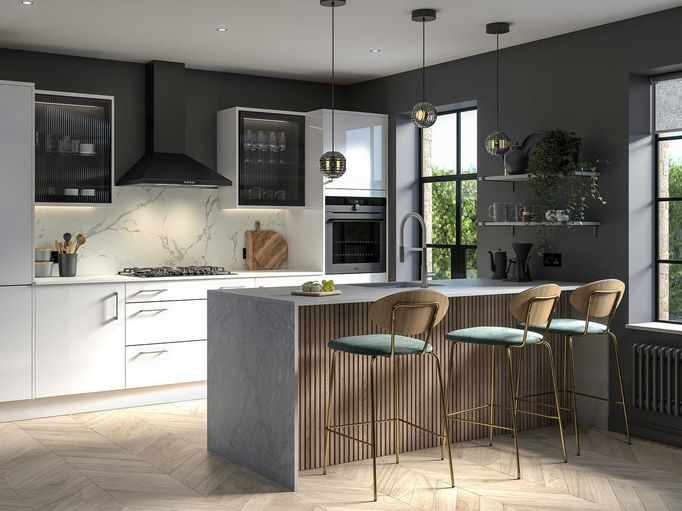

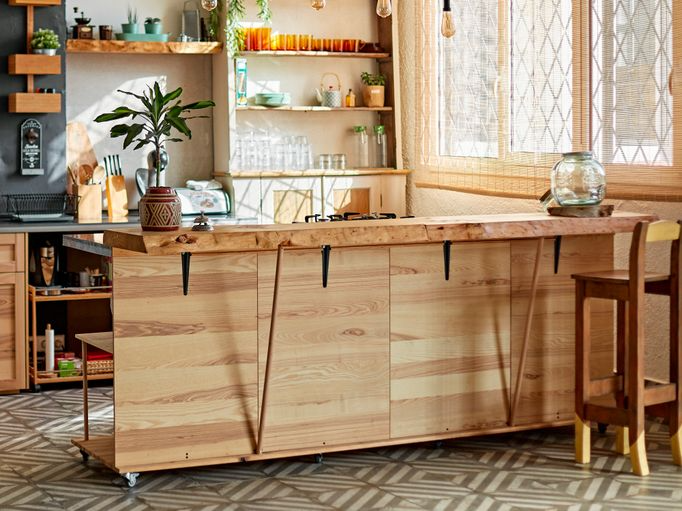
There are many different types of kitchen island.
Possibly the most common type is a fitted island with base cabinets and a countertop that matches the rest of the kitchen.
An appliance island, where you can have a sink and/or oven fitted, cost a lot more as they need to be plumbed or wired in.
Freestanding islands aren’t built into your kitchen. The advantage of these is that they can be moved or replaced quite easily if your needs change.
Kitchen trolleys are a kind of island on wheels, which is a great option for a small space as they can be wheeled out when needed and tucked away when not. The disadvantage of these is that they may not actually provide a lot of space or be difficult to manoeuvre if it’s heavy.
A peninsula is similar to an island, but attached to one wall. This works well in smaller spaces, or long-narrow kitchens, and usually lends itself to creating a breakfast bar.
Kitchen lighting ideas
It’s easy to overlook lighting, but it’s important to ensure you get it right – not just to create an ambient setting, but also so you can see well enough to cook comfortably and safely.
Kitchen lighting ideas – in pictures
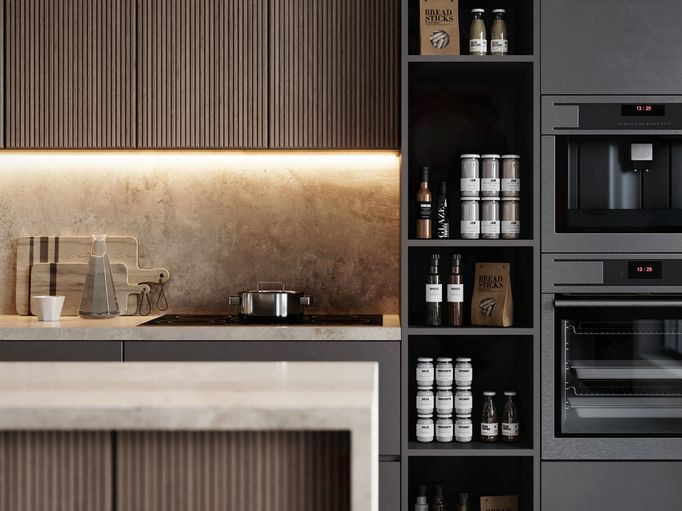

There are three key types to consider:
Ambient This is general lighting, for example the combination of your overhead lights and natural lighting in the room. The key is to create a comfortable and even level of light throughout a space. If you don’t have much natural light, you’ll need to install more ambient lighting. If your dining table is in your kitchen, consider hanging pendant lights above it.
Task This is used to illuminate functional areas. Spotlights are common, but LED strips that run under cabinets to help illuminate work surfaces are also popular. Consider additional task lighting if you work from home in the kitchen.
Accent This is more of a ‘mood lighting’ feature, used to highlight visually appealing areas, such as a painting, display shelving or a cabinet.
For further advice on layouts and how to make your space work hard, visit our guide to kitchen planning
Kitchen flooring ideas
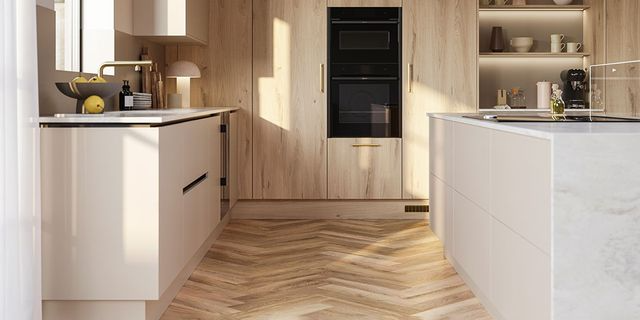
Flooring is important because it needs to stand up to daily use and spills. A good kitchen floor should be durable, easy to clean, and resistant to stains and wear and tear.
Here are some popular options:
Tiles Durable, water-resistant and available in a wide range of colours and patterns, tiles are easy to clean, but can be hard and cold underfoot.
Vinyl Available in sheets, tiles or planks, vinyl is water-resistant, affordable and comfortable to walk on. Luxury vinyl tiles (LVT) can replicate the appearance of wood or stone.
Laminate Composed of multiple layers with a photographic layer that mimics the look of wood, stone or tiles, laminate is affordable and easy to install, but less resistant to moisture.
Natural stone flooring (such as marble or granite) Offers a luxurious look with unique patterns and colours. Stone is very durable, but can be cold and slippery without a textured finish and regular sealing is required to prevent staining.
Linoleum Made from natural materials such as linseed oil, linoleum is an eco-friendly option. It’s durable, water-resistant, and available in a variety of colours and patterns.
Wood flooring Offers a warm, timeless look, but is generally quite expensive. Solid hardwood is durable, but requires regular maintenance and is susceptible to water damage. Engineered hardwood is more resistant to moisture.